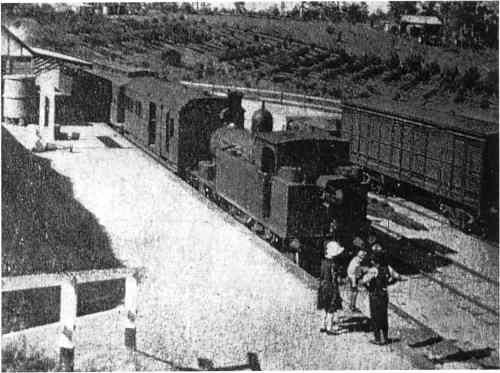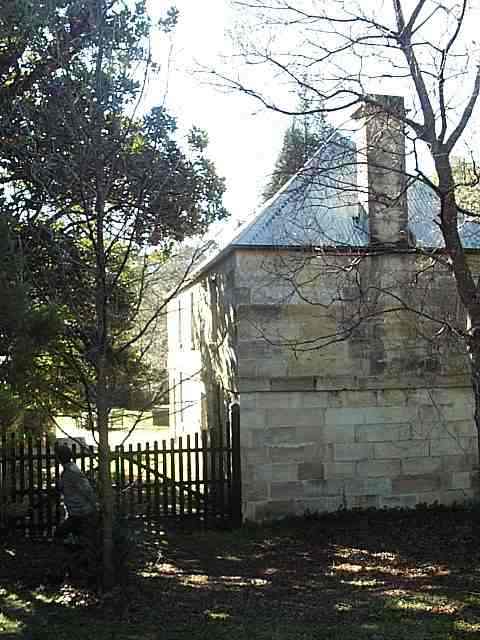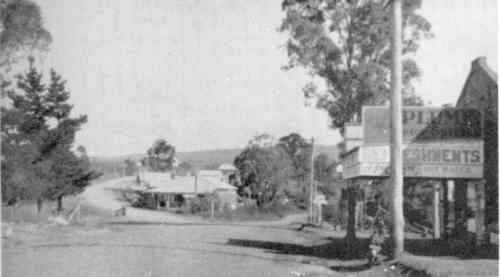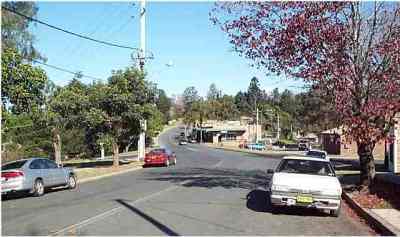
Accommodation
Eating Out
Community Groups
Local Attractions
What's On
Area Map
Contact
Site Map
|
William Lawson was given a grant of 500 acres near Wheeny Creek in 1810, but never lived there. Together with Gregory Blaxland and William Charles Wentworth, Lawson made a successful crossing of the Blue Mountains in 1813, which is now the major road to the west - the Great Western Highway. The name Kurrajong came from the Aboriginal word for the beautiful tree, Brachychiton populnous, which once grew in abundance in the area. It was used as a general name for the area from the Hawkesbury River to the mountains. In 1810 Governor Macquarie, on his initial visit to the Hawkesbury, rode up a rough track to the summit of "Kurry Jung Hill", possibly near Bowen Mountain. From there he "had a very grand noble Prospect of the low grounds on both Banks of the River Hawkesbury" (Gov. Macquarie's Diary, 1st Dec., 1810) The oldest settlement was along Comleroy Road, which from about 1819 had been the main road north from Sydney to the Hunter Valley. In 1827 it was described as nothing but a bridle track and used chiefly to drove cattle to the new settlements in the Hunter River Valley. In the 1820s and 30s, the notorious bushranger Jack Donahoe and his gang terrorised the settlers and travellers of Kurrajong and Richmond. Victims were robbed and sometimes stripped naked and their horse stolen, left to get home as best they could! A Mr. Harrington, living near Kurmond, was shot and killed in his home by gang member, George Armstrong. Several inns catered for locals and travellers along the Bells Line of Road. One was the "Goldfinder's Rest", established in 1851 and run by John Lamrock. It was used by those going to the Turon diggings. About 1870 it became a Post Office and Store. The original building (pictured above) still exists beside Little Wheeny Creek and is a private residence. Tthe area was found to be suitable for the growing of fruit trees and the Kurrajong area became renowned for its orchards. By the late 1800's orchardists and others were lobbying the government to extend the railway from Richmond (opened in 1864) to Kurrajong so that they could get their produce to market more easily. In 1920 the Government established the Kurrajong Soldier Settlement scheme with 46 blocks allocated to returned Servicemen to take up farming. Some of the original four room timber settlement houses can still be seen from Bells Line of Road near Kurmond. The lobbying for a railway eventually paid off, and in 1926 the extension of line from Richmond was opened.  Kurrajong
Station in the 1920s with Allison's Orchard in the background. Kurrajong
Station in the 1920s with Allison's Orchard in the background.However, by the time the line was opened, the
orchardists had begun to use trucks and the line was never economically
viable. Landslides gave an excuse for the line to close in 1952. In the 1930s, the district contained many Guest Houses, especially along Comleroy Road. The beautiful scenery of rolling hills with the mountain backdrop attracted many city people for a stay in the country. The Kurrajong Heights Hotel, a magnificent building with panoramic views towards the coast, was opened in 1928 but destroyed by fire in 1975. The 1950s and 60s saw a decline in local tourism as people began to travel further afield for their holidays, in cars and planes.
Kurrajong's orchards also began to decline and many properties were subdivided into smaller acreages. Horses and cows grazed on the paddocks once covered by fruit trees. Today there is a revival in Kurrajong. The scenery and rural tranquility has made it a sought after location for people wanting an escape from the bustle of life in the city. Many people have purchased small acreages as hobby farms or rural retreats. There is also a revival of guest accommodation, as the pressures of modern work have meant that people want a weekend away that is only a short drive from Sydney.
In 2001, the Kurrajong-Comleroy
Historical Society was formed to increase awareness in and the
preservation of Kurrajong's historic heritage. Take a look at Kurrajong and the surrounding area in the past in the image database. References: See also the Hawkesbury Historical Society for information on the history of The Hawkesbury. |

 Kurrajong Village in the 1930s.
Kurrajong Village in the 1930s.  Kurrajong
Village in 2000.
Kurrajong
Village in 2000.